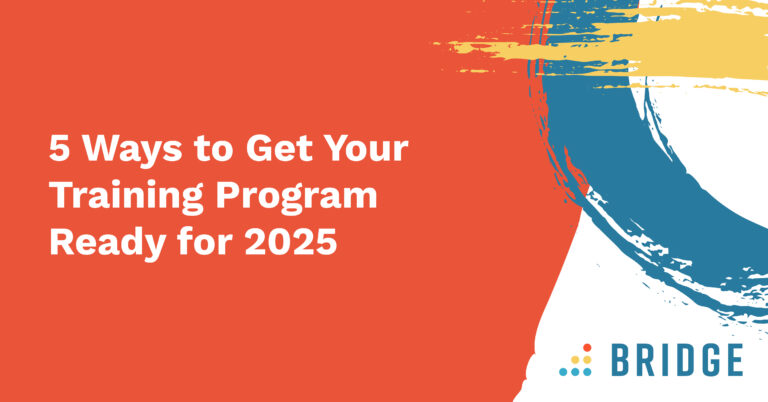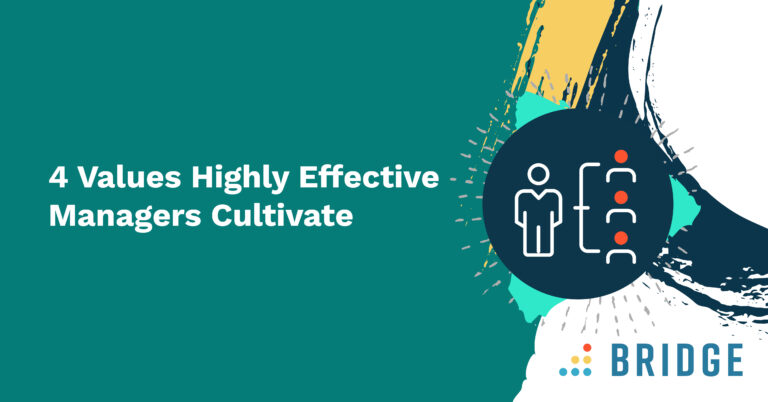High-performing organisations have a secret: they’ve discovered that they need to be learning organisations. Being high-performing is no accident. It’s a deliberate and intentional outcome of putting learning at the centre of everything that they do.
High-performing organisations put learning and performance together in the same camp. They see learning and performance as two sides of the same coin. The result is that they actually drive the high-performance that is easy to envy from the outside.
What does this look like?
In high-performing organisations you can bet that training isn’t simply viewed as a chance to get away from the day-job for a break. Instead, organisational goals have been considered in line with individual goals and gaps are plugged. Upskilling is seen as empowering.
The employees on training courses and undertaking development opportunities in the high-performing organisation see their development pathway and clearly grasp the relevance of each element.
They are motivated and engaged. In turn, they perform better. They also know what performance actually means instead of some wishy-washy objective that isn’t very clear or measurable.
When it comes to learning, think performance
We need to radically change the way we think about learning in the workplace. We need to start with insight into current and future performance and then work out what learning is needed.
You need pinpoint accuracy into understanding an individual’s performance and their place in meeting the overall objectives of their team and the organisation.
So you need to identify:
- The individual and where they are.
- How they are performing and how you want them to perform.
- How to give them the skills and ability to bridge that gap.
- Any obstacles holding them back at the moment.
This leads to actively shaped and consciously chosen development and training opportunities. You can pair one individual with another for mentoring because you can clearly see where strengths and weaknesses lie. You can discuss and overcome hurdles that are stopping individuals moving forwards. You can choose traditional training courses with pin-point accuracy rather than simply meeting a need to clock up a certain number of hours.
Collaboration is at the heart of everything
If this is a new concept, or even if it’s something you’ve started with and are yet to make tangible headway, there’s something else which comes into play: collaboration. Performance (and learning and development) are not about pitting one individual against another in a brutally competitive match. Instead, performance needs to be seen as the responsibility of everyone, with everyone contributing towards it through team effort.
Not only can individuals within teams not function without each other, this should bubble up amongst all levels of the organisation. Departments can learn from one another in remarkable ways if they only open the collaborative conversations to find out how. Everyone in the organisation, particularly at the very top, needs a clear picture of what happens elsewhere.
Communication and collaboration needs to happen backwards, forwards, sideways, upwards and downwards.
Evaluation never stops
Another thing that high-performing organisations do, on top of the above, is they never stop reviewing how they are doing. They are in a continuous cycle of evaluation.
They measure, they review and they assess. They don’t just train and send out a certificate. They see how that learning is actively being applied within the workplace and, if it’s not, they find out why. And this measurement happens quantitatively and qualitatively against the individual’s and the organisation’s goals.
They work out what will be the evidence they need to know that a goal or objective has been met and they actively keep a look out for it.
Alongside this, and highly connected to it, these organisations recognise the valuable importance of constructive feedback. Praise, appreciation, suggestions and support bat back and forth around the organisation between individuals. It’s powerfully motivating and engaging, as well as a way of ensuring difficulties don’t get ignored.
Feedback is utterly ingrained in the organisational culture and it’s an active part of daily working life.
High-performance is no accident
When we look at it this way – that learning and performance are so entwined, and the choices behind every element are deliberate – we can see that it is no accident that some organisations are more high-performing than others. They’ve realised that performance involves getting the best out of their people, and that requires a consistent, constant and clear approach to their learning.Are you ready to embrace the secrets of high-performing organisations? Find out how Bridge can help.



